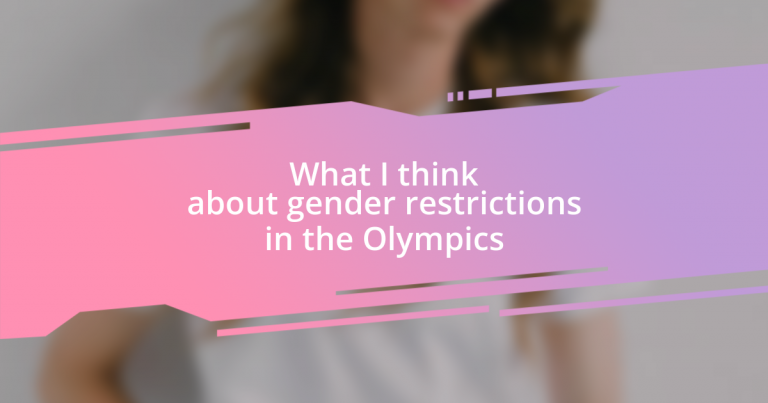Key takeaways:
- The emotional and societal complexities surrounding gender restrictions in sports highlight the ongoing struggle between fairness and inclusion, particularly regarding testosterone levels in athletes assigned female at birth.
- Current policies, such as those by the IOC, allow transgender athletes to compete based on gender identity while adhering to specific testosterone criteria, but these policies are evolving as societal understandings of gender shift.
- Case studies like Caster Semenya and Laurel Hubbard showcase the intense debates and personal challenges faced by athletes, illuminating the need for fair and inclusive policies in competitive sports.
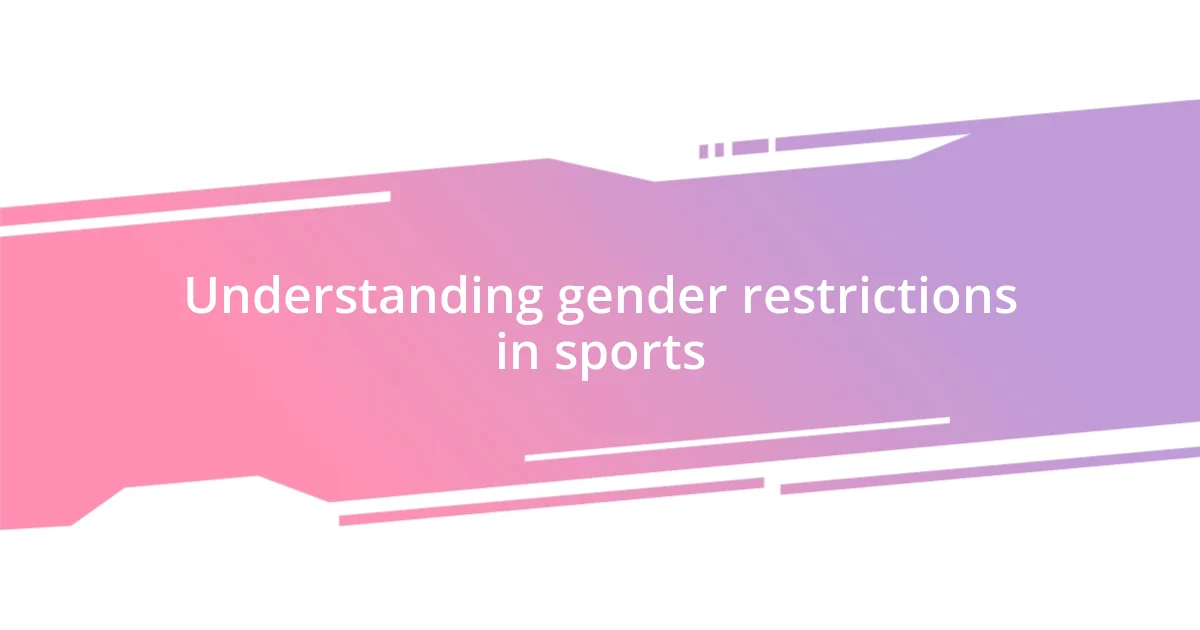
Understanding gender restrictions in sports
Understanding gender restrictions in sports is a complex issue that dives deep into both biology and societal norms. I remember watching a documentary about female athletes who were forced to undergo gender testing to compete. Can you imagine the emotional turmoil they faced? It made me realize that these restrictions are not just rules; they often reflect outdated perceptions of gender and what it means to be an elite athlete.
Consider the debate around testosterone levels in athletes assigned female at birth. This topic sparks intense discussions about fairness versus inclusion. I often wonder, where do we draw the line between maintaining competitive integrity and allowing individuals to express their true identities? As someone who values both fairness in competition and the right to participate, I find this balancing act particularly challenging.
Another aspect to consider is how these restrictions can perpetuate stereotypes about strength and ability. For instance, many people still believe that strength is directly tied to gender. I recall a friend dismissing a female weightlifter’s achievements simply because of her gender, which saddened me. It made me think about how our views on gender can shape not just policies in sports, but also the lives and aspirations of athletes.
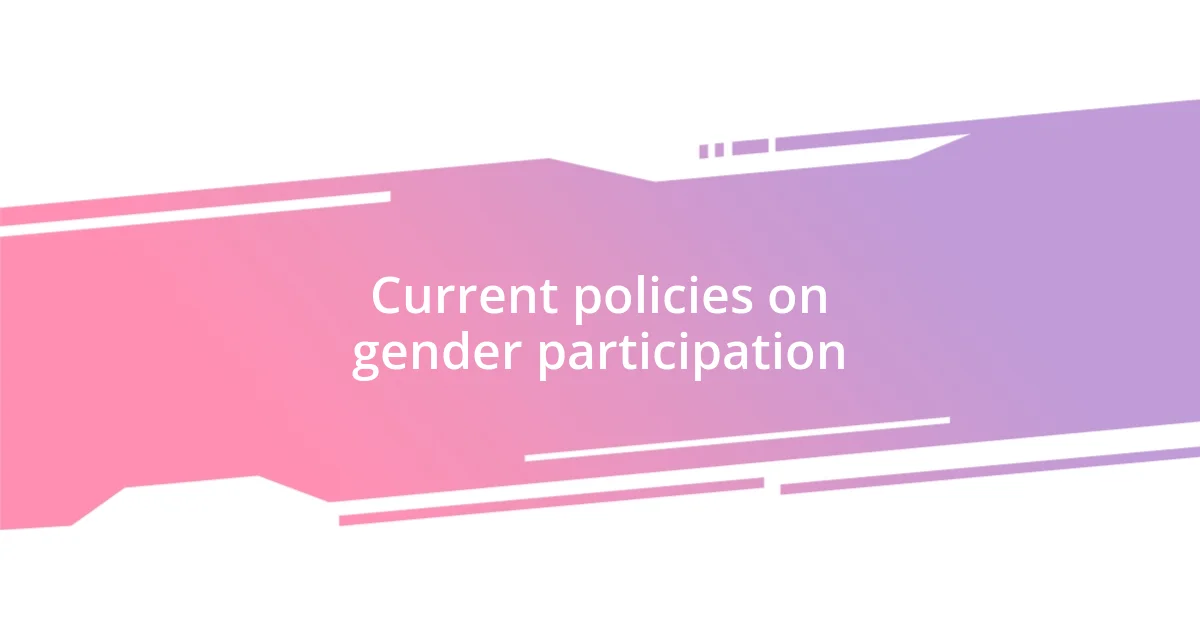
Current policies on gender participation
It’s fascinating to explore the current policies governing gender participation in the Olympics. The International Olympic Committee (IOC) allows transgender athletes to compete in accordance with their gender identity, provided they meet specific criteria, like maintaining testosterone levels below a certain threshold for a defined period. This creates a framework that attempts to balance inclusion with fairness, a challenge I often think about when reflecting on the emotional journeys that these athletes endure.
Looking back, I recall watching an Olympic event where a transgender athlete made history by competing in a women’s category. The atmosphere was a mix of celebration and tension, and I could feel the weight of the moment for everyone involved. As I cheered alongside others, I couldn’t help but ponder the complexities of these policies—are they serving all athletes equally, or do they inadvertently create divisions and feelings of inequity?
The policies will likely continue evolving as societal understandings of gender shift. For instance, the guidelines around hormone levels may change over time as more research emerges. Have you ever found yourself in a discussion about how these changes impact athletes’ lives? I know I have, and I always struggle to find a definitive answer. The real question is, can we reshape these policies to honor both competitive spirit and the diverse identities that athletes represent?
| Aspect | Current Policy |
|---|---|
| Transgender Athlete Participation | Allowed to compete based on gender identity with specific testosterone criteria. |
| Menstruation Status | No direct impact on eligibility; policies focus primarily on hormonal levels. |
| Eligibility for Non-Binary Athletes | Varies by federation; limited explicit policies in the IOC. |
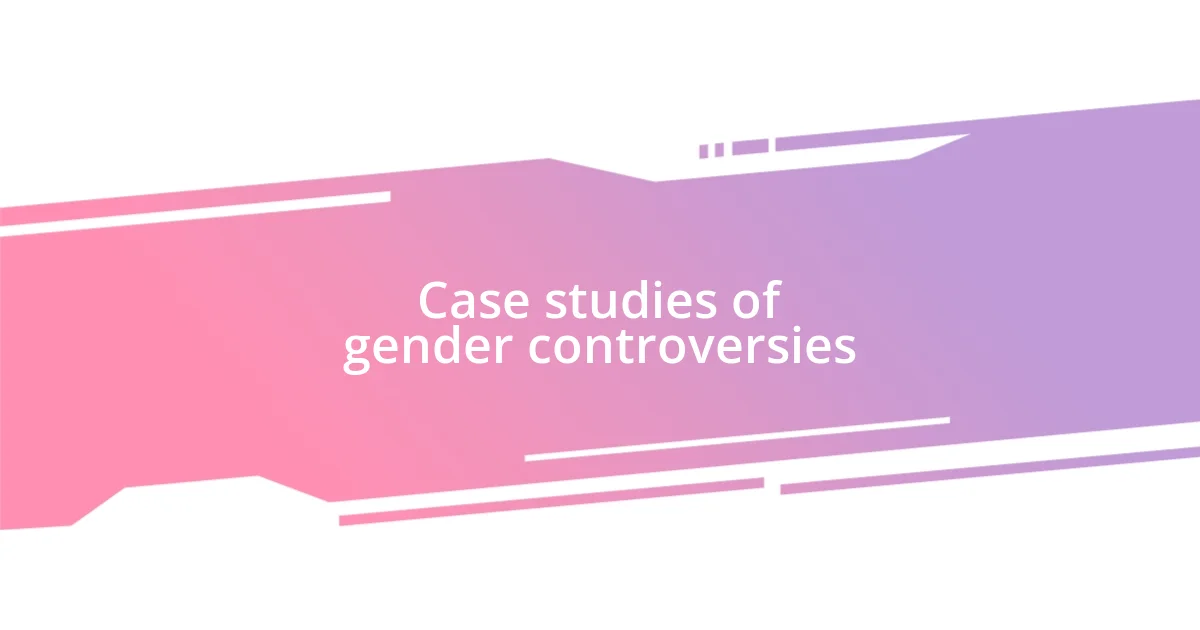
Case studies of gender controversies
One prominent case study revolves around Caster Semenya, a South African runner whose natural testosterone levels sparked global debate. When I first heard Semenya’s story, I was struck by the overwhelming mix of admiration and controversy surrounding her. Facing scrutiny of her body and gender identity led not only to competitive challenges but also to personal struggles that many can’t even begin to fathom. This situation encapsulates the essence of the gender conversation in sports: where is the line drawn between a fair competition and the right of an individual to compete based on their identity?
- Caster Semenya was forced to undergo hyperandrogenism testing, questioning her eligibility to compete.
- Similar cases have surfaced in track and field, prompting protests from athletes and advocacy groups.
- The emotional toll on athletes like Semenya isn’t just about sport; it affects their mental health and public perception.
Another significant example is the inclusion of weightlifter Laurel Hubbard, a transgender athlete who made headlines when she qualified for the Tokyo 2020 Olympics. I vividly remember watching the event unfold, feeling the collective anticipation and anxiety in the air. The reactions were mixed; many celebrated her achievements while others raised concerns about fairness. This highlighted a fundamental question that hit close to home for me: how does one define the spirit of competition when athletes’ experiences and identities are so fundamentally diverse?
- Hubbard’s participation brought attention to ongoing debates about trans athletes in women’s sports.
- Public opinion was divided, showcasing varying perceptions of fairness and equality.
- Social media buzzed with reactions, both supportive and critical, revealing how deeply personal this conversation can be for many individuals.
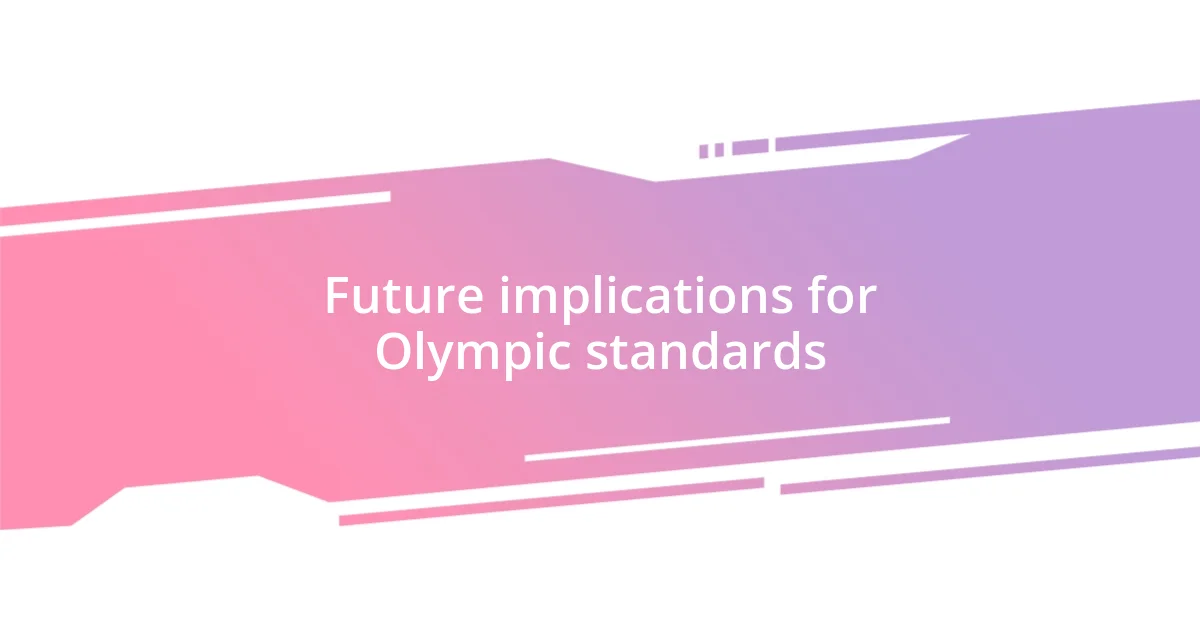
Future implications for Olympic standards
As we look ahead, I can’t help but wonder how the evolving landscape of gender standards in the Olympics will reshape the very fabric of competitive sports. Each change in policy not only affects the athletes competing but also sends ripples throughout society. It raises questions about fairness—how do we ensure that the essence of competition remains intact while making room for everyone?
A thought that often crosses my mind is the potential for new classifications in sport. Imagine a future where we might see competitions not strictly divided by gender, but perhaps by a range of criteria that reflect the nuances of gender identity. This would be a bold move, but could it really level the playing field, or would it introduce an entirely new set of challenges?
I’ve experienced the excitement that diversity in sport can bring. I’ve cheered for an underdog and celebrated groundbreaking moments when barriers fell. The future of Olympic standards could hinge on values of inclusivity and fairness being deeply understood and accepted. I believe we have a chance to create an environment where all athletes feel championed. How incredible would it be to see that unfold in the coming years?












